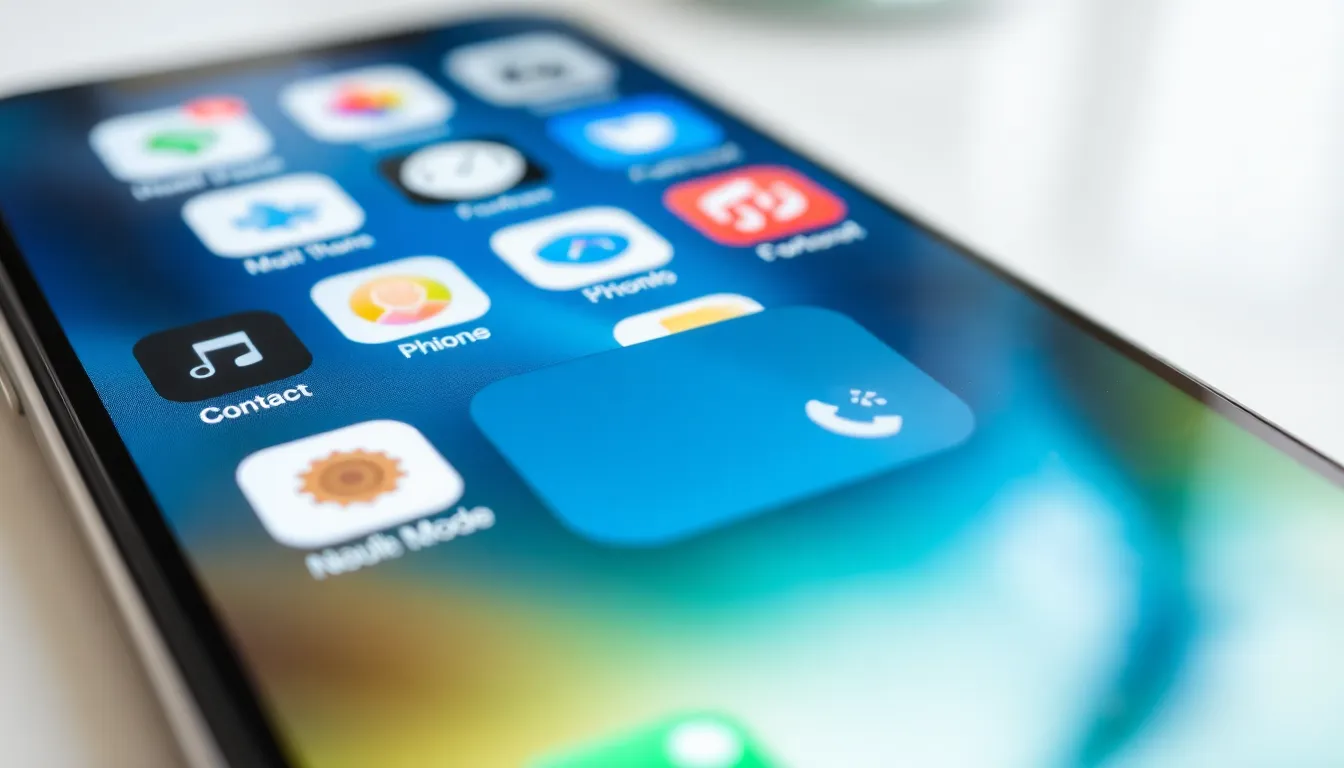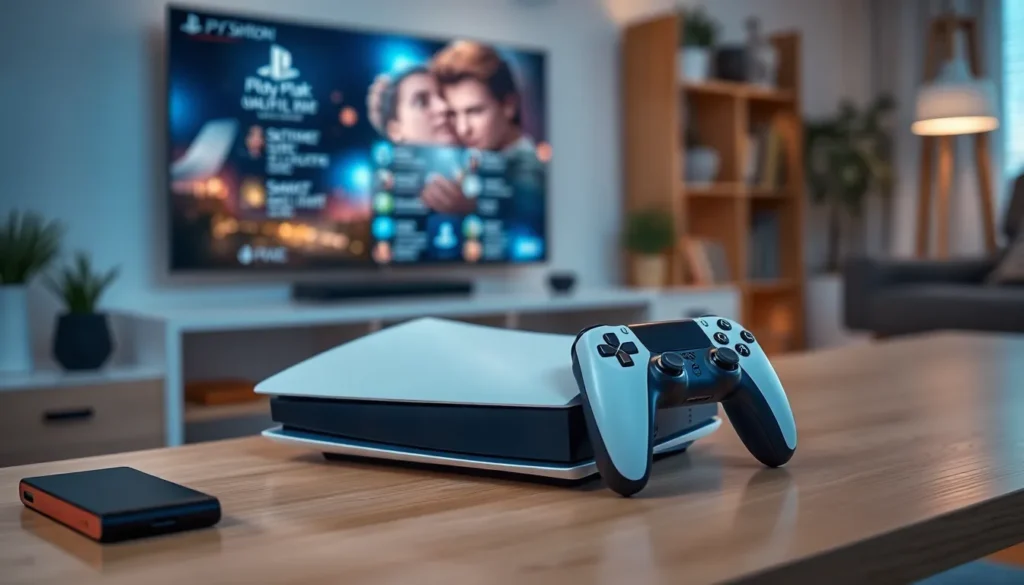If you’ve ever stared at your iPhone’s contact widget and thought, “This could use a makeover,” you’re not alone. That little square of information is like the front porch of your digital life—first impressions matter! Whether you want to showcase your most important contacts or just declutter the chaos, editing that widget is easier than finding a good Wi-Fi signal in a coffee shop.
Table of Contents
ToggleUnderstanding the Contact Widget on iPhone
The contact widget on iPhone serves as a key feature that provides quick access to important contacts. This widget can display frequently contacted individuals or a selection of favorite contacts. Customizing the widget enhances its functionality and personal relevance.
Users often prioritize which contacts display based on their habits and needs. Contacts may showcase family members, friends, or colleagues who require fast access. Simplifying the contact list increases efficiency when making calls or sending messages.
Editing the contact widget involves a few straightforward steps. From the home screen, long-press the widget until options appear. Choosing “Edit Widget” allows users to tailor which contacts are visible. Users can either add new ones or remove existing ones based on their preferences.
In addition to displaying contacts, the widget can vary in size. Selecting a smaller size provides a more compact view while larger sizes offer more detail. This flexibility helps users optimize their screens according to their usage patterns.
Enhanced organization of the contact widget reflects individual lifestyles and priorities. This personalization makes it easier to manage communication efficiently. Focused widgets help streamline the process of reaching out to important contacts.
Setting up the contact widget on iPhone ensures immediate accessibility to crucial connections. Clear visibility of frequently used contacts promotes effective communication. Through thoughtful customization, users can create a widget that aligns with their routines and enhances their digital experience.
Steps to Access the Contact Widget

Accessing the contact widget on an iPhone involves a few straightforward steps. It allows users to customize which contacts appear, enhancing communication efficiency.
Navigating to the Home Screen
Begin by unlocking the iPhone. The home screen displays various app icons. Swipe left or right to find the desired screen if multiple pages exist. Press and hold an empty space on the home screen to enter “jiggle mode,” which enables rearranging or adding widgets. Users can identify their widgets in this mode easily. Tap the plus sign located in the top left corner to initiate adding a widget.
Locating the Widget Library
Upon tapping the plus sign, a widget library appears. This library showcases several available widgets. Scroll through the list to find the contact widget. Users can tap on it for various size options. Selecting an option provides a preview of the widget’s layout. After deciding on the size, tap “Add Widget” to include it on the home screen. This quick process sets up the contact widget, allowing further editing for personalization.
Editing the Contact Widget
Editing the contact widget allows users to tailor their quick access to important connections. The process involves adding or removing contacts and adjusting the widget’s appearance.
Adding Contacts to the Widget
To enhance connectivity, users can easily add contacts to the widget. They begin by entering “jiggle mode,” which allows for widget adjustments. Next, they tap the contact widget, presenting a selection of contacts to choose from. Selecting the desired contacts finalizes the addition, making those individuals readily accessible. Users can prioritize contacts based on frequency of communication, ensuring quick outreach to essential connections.
Removing Contacts from the Widget
Removing contacts from the widget is just as straightforward. Users enter “jiggle mode” once more. They locate the contact widget and tap it to review the displayed contacts. An option for deletion appears next to each contact, enabling users to streamline their selections easily. By decluttering the widget, users can focus on their most relevant connections, aligning the display with their communication habits.
Customizing Widget Appearance
Customizing the widget’s appearance offers additional personalization options. Users can modify the widget size by tapping and holding the widget, then selecting from available sizes. Different layouts allow for varied contact visibility, enhancing the home screen’s aesthetic. Changing the color scheme or style further personalizes the contact widget, aligning it with individual preferences. The flexibility in design promotes a more engaging user experience tailored to personal needs.
Troubleshooting Common Issues
Editing the contact widget may sometimes present challenges. Frequently, users encounter issues like contacts not appearing or changes not saving. Checking for software updates can resolve many of these glitches. Accessing the Settings app and navigating to General provides the option to check for updates.
Another common issue arises from contacts not syncing properly. Ensuring the correct account is selected can often fix this. Observing the settings for each account in Contacts aids in identifying syncing problems. If this doesn’t resolve the issue, restarting the iPhone often refreshes connections.
Users may also experience difficulties when removing contacts from the widget. Tapping the widget should allow for selecting contacts to adjust the list. If the changes don’t take effect, exiting jiggle mode and re-entering usually prompts the system to register the updates.
Widget size adjustments can lead to cropped or overlapping contacts. To address this, resizing the widget can optimize its appearance. Users should try selecting a different size option to see if it accommodates their contact list better.
Occasionally, settings may reset to default after software updates. Regularly checking the widget settings can ensure personalized adjustments remain intact. Familiarizing oneself with these settings may enhance overall user experience.
Lastly, if issues persist, contacting Apple Support provides access to expert assistance. They can guide users through specific troubleshooting steps tailored to individual concerns.
Personalizing the contact widget on an iPhone can significantly enhance communication efficiency. By tailoring this feature to showcase important connections users can streamline their interactions and improve accessibility. The straightforward editing process allows for quick adjustments ensuring that the widget reflects individual preferences and habits.
Regularly updating the widget not only keeps it relevant but also contributes to a more organized home screen. Users can enjoy a seamless experience with their contacts while maintaining a visually appealing layout. For any persistent issues, seeking assistance from Apple Support can provide additional solutions. Embracing these customization options empowers users to make their iPhone experience truly their own.






